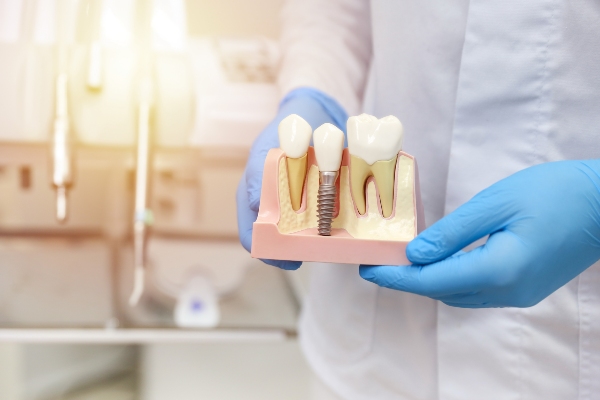 Studies show that dental implants remain the gold standard in dental restorations. These dental replacements are the most stable ones that you can get. It may be invasive, but once it heals well, you will have good dental function again. Here are the details about the process of getting dental implants.
Studies show that dental implants remain the gold standard in dental restorations. These dental replacements are the most stable ones that you can get. It may be invasive, but once it heals well, you will have good dental function again. Here are the details about the process of getting dental implants.
The assessment
The dentist will examine the patient’s mouth first. Doing so can determine the full condition of the jawbone. This can then help the dentist decide which implant procedure will help the patient the most. The dentist may order dental impressions and X-rays. It is also important to match the color of the artificial crowns to the neighboring natural teeth.
Additional planning may happen to see how many teeth will need dental implants. Discussing the patient’s medications and health conditions is also important. Some patients may need to take antibiotics before implant surgery. This can protect them from infections.
Possible dental extraction
The dentist may remove the remaining teeth in the mouth if these teeth have severe decay. The extraction can happen on the day the individual gets dental implants. Inserting the dental implants can happen right after the dentist pulls out the tooth. This allows the dental socket to heal as the titanium rod merges with the gums and jawbone.
Using a local anesthetic is necessary for extracting the tooth. The area will be numb. The patient will not feel any pain. Pulling the tooth will not take time at all. If it is a broken tooth, the dentist may take a little longer. There will be some pressure and mild tugging.
Some bleeding will happen after the extraction. The dentist will place sterile gauze on the area. Biting down on it can help put pressure on the extraction site. This can stop the bleeding. Follow the dentist’s instructions on caring for the extraction and implant site.
Bone grafting and titanium rod placement
The dentist will check if the patient’s jawbone is thick. If it is not, a bone graft is necessary to thicken the area. The surgery for dental implants will begin after complete healing. By this time, the jawbone will be strong enough to support the titanium rods.
If the jawbone is strong enough, there will be no need for a bone grafting procedure. The implant surgery can begin right away. Jawbone thickness and strength are important. Chewing and biting involve significant pressure.
The jawbone needs to support the titanium rods while performing these activities. Healing will involve the merging of the rods with the jawbone and gum tissue. Recovery varies from person to person. It may take three to nine months for this process to complete.
Placement of abutments
The abutments for the dental implants will come next once these titanium rods are stable enough. These are pieces that will connect the dental crown to the titanium rods. The dentist will tighten the abutments so that they remain steady while the individual eats or speaks. There will be a small amount of pressure. This process will not be painful, but the patient will get a local anesthetic. The dentist will place healing caps over the abutments as they heal.
Attachment of the permanent dental crowns
The dentist will call the patient back after the gums heal completely. Choosing a permanent or removable dental implant is necessary. Multiple teeth in the back will be functional again. Removable implants are easier to clean or even replace if they break.
Understanding the process of getting dental implants can prepare you for your surgery
Having dental implants can restore the teeth that you lost. The process may be invasive, but proper healing will allow the titanium rods to stay stable and strong. These are the gold standard of dental restorations. Working with your dentist can lead to the possible success of your implant surgery.
Request an appointment or call Desert Sun Dental at 509-785-6491 for an appointment in our Quincy office.
Related Posts
Dental implants are effective, long-lasting artificial teeth. Implants are surgically attached to the jawbone to look and function like natural teeth. As a result, patients can chew, talk, and laugh without worrying about dentures slipping. They also improve oral health. This article explores when and why to get implants and the qualifying factors for treatment.Patients…
Dental implants are an effective replacement for missing and damaged teeth. There are, however, some factors that may cause implants to fail. If you have noticed the signs of failing implants — such as severe pain, trouble chewing, and gum inflammation — it is important to consult a dentist to curb the problem. This article…
Replacing missing teeth with dental implants can result in a stable and strong bite. It restores the crown and the root. Knowing how this dental replacement system replaces a missing tooth can convince you to set an appointment with your dentist about it. Here are the details about how dental implants can make this happen.Tooth…
